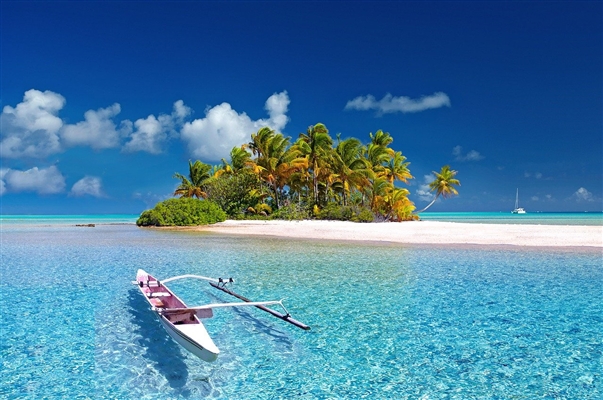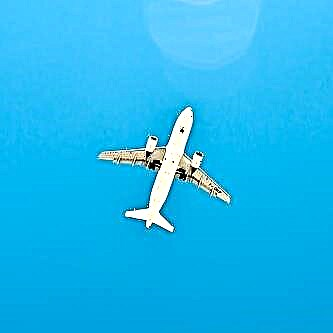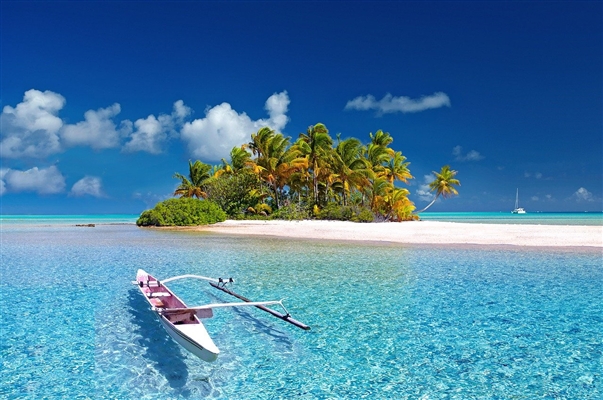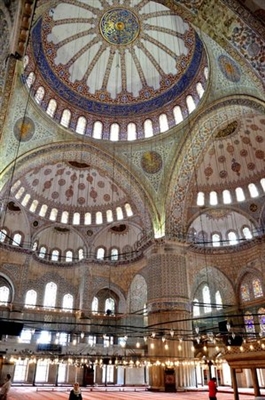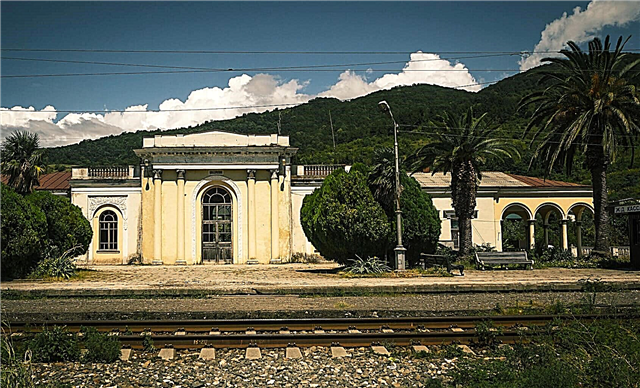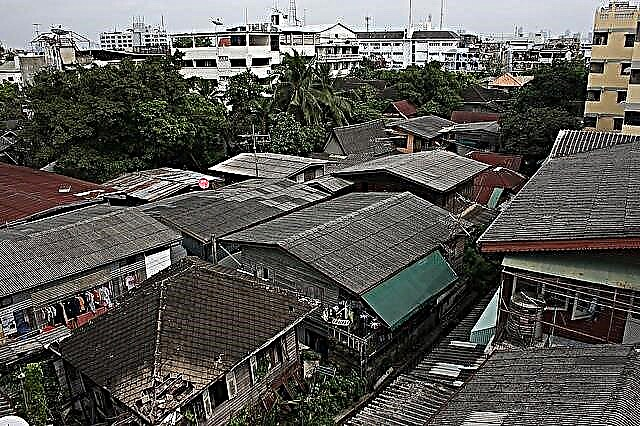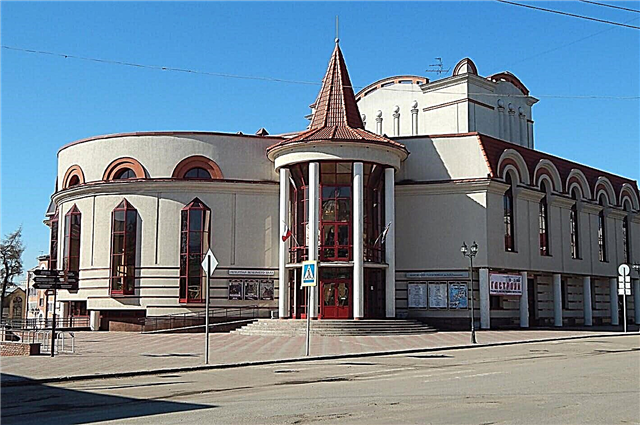The sights of the Kirov region are not as advertised as in the neighboring regions. However, this does not mean that they are less interesting or insignificant. The nature of these places deserves special protection, which is why the Nurgush reserve was created. Museums associated with eminent compatriots are another important milestone in the history of the region. Satlykov-Shchedrin, Tsiolkovsky, Shpagin and others were honored not only with a mention, but with personal exhibitions and excursions. Kirov and the surrounding towns are mostly Orthodox. In them you can find churches and monasteries of different centuries of construction, for example, the Assumption Trifonov Monastery. The region does not lag behind trends and strives to surprise: this is how the Dinosaurs on Vyatka Park appeared, capable of delighting curious visitors of all ages.
The most interesting and beautiful places in the region
List, photos with names and descriptions of the sights of the Kirov region!
Vyatka Paleontological Museum
Located in Kirov. Founded in 1994. In the first half of the last century, the remains of pareiasaurs were found on the territory of the region, including 2 complete skeletons. They became the basis of the collection. Excavations are ongoing to this day. Exhibits - both found bones and fossils, and models, documents, photos. The exhibitions tell about the history of the planet and the reptiles that inhabited the Earth.

Reserve "Nurgush"
Founded in 1944. The area is almost 23.5 thousand hectares. Its peculiarity is that the reserve consists of two zones, 370 km apart from each other. The first is the floodplain of the river, lakes, a mixture of coniferous and deciduous forests, which belong to the Kotelnichsky district. The second is mainly old and even ancient forests located in the Nagorsk region. The fauna here is no less valuable and protected than the flora.

Assumption Trifonov monastery
Male. Located in Kirov. Founded in 1580. Named after the founder. The main cathedral is the Assumption of the Virgin. It has preserved the pre-revolutionary iconostasis. During the Soviet period, gravestones, gravestones and monuments were brought to the territory of the monastery. After the restoration of the previous status, the restoration touched not only churches and living quarters, but also the walls with towers.

Lake Shaitan
The nearest town is Urzhuma. The area is 2 hectares, officially the depth is up to 12 m, although there are versions that it is up to 25 m. It is part of the Bushkovsky forest reserve. The coast is swampy. Drifting islands periodically run along the water surface. The larger ones can accommodate up to 5 people. Several legends are associated with Shaitan, including the punishment in the era of serfdom by swimming in the lake.

River Nemda
Refers to the territory of the Nemsky and Urzhumsky districts. It is a tributary of the Vyatka. The length is 96 km. It starts from the Krasnovo tract and ends at the village of the same name. There is a dam and a reservoir on the river. In some areas, the banks are planted with dense forest. There are rubble and rocky areas. A large number of bends makes Nemdu picturesque and causes the formation of backwaters.

Rock "Sentinel"
It is located in the Soviet district on the banks of the Nemda. This remnant looks like an uneven pillar, undermined by time and wind. He guards the nearby rock, where, according to legend, the intercessor prince is buried. According to another version, he himself went there for eternal rest, but promised to return at the first call. Nearby, in the 70s, the Podolskaya Shiverekia was discovered - a plant that is not typical for this area.

Velikoretskoe
Located in the Yuryevsky district. The village is famous for its religious procession and a big holiday in honor of the icon of St. Nicholas the Wonderworker. During this period, services are often held outdoors. These events start on June 3 and last for several days. The sights of Velikoretsky are temples that form a single complex. The oldest Church of the Transfiguration was built in 1739. The nature around is included in the protected zone.

Lake Lezhninskoe
It is located in the Pizhansky district. Area - 4 hectares. The greatest depth exceeds 36 m. It is also a natural monument, together with the lake area extends over almost 50 hectares. Formed on the site of the funnel, hence such a depth. This, combined with the transparency of the water, attracts diving and spearfishing enthusiasts. It warms up poorly even in summer. The shores are covered with dense vegetation in places.

Belokholunitsky pond
It is located on the Belaya Kholunitsa River in the area of the same name. The area is about 16 km². The width in some places reaches 3 km. The average depth is 4 m, the maximum is 11 m. The pond was formed in the second half of the 18th century. This was due to the construction of a nearby plant that needed water. Small ships with finished products ply here. Now it is exclusively a place to stay.

Slobodskoy Museum and Exhibition Center
Founded in 1918. It opened a couple of years later. It is a union of several museums: the museum of local lore, to which the wooden Mikhailo-Archangel church built in 1610 and the bell tower of the Transfiguration Cathedral, the museum-estate of academician A.N. Bakulev, and the house-museum of Jan Rainis are attributed. The exhibition center hosts folklore events, seminars and classes for children.

Museum "Dymkovo toy: history and modernity"
Located in Kirov. Opened in 2011. The collection consists of about 700 exhibits and is constantly growing. At the same time, due to the modest area of the museum, only about 250 copies of the Dymkovo toy can be exhibited at a time. The excursion will acquaint you with the history of the origin of production, as well as demonstrate how it has evolved over the years. With outward immediacy, the painting has strict rules.

Alexander Garden in Kirov
Founded in 1825. City Park. The portico and the fence were designed and preserved unchanged from the first half of the 19th century. The decision to lay out the garden was due to the order of the emperor. The system of alleys and landings is unchanged, but the details: lamps, benches, curbs have changed several times. Previously, trees were planted. One of the most significant examples of provincial classicism.

Kirov Botanical Garden
Founded in 1912. It was originally private and belonged to a retired military man. Part of the territory is occupied by a conditional taiga zone with a corresponding type of plants, part is typically garden, but there are also exotic representatives. Among the flowering plants, plantations of peonies and one and a half hundred species of lilies stand out. There is also a small island where stones are adjacent to vegetation.

Vyatka Art Museum named after Vasnetsovs
Located in Kirov. Founded in 1910. The museum was based on an art circle, which, in addition to the founders, included people who understood art: historians, researchers of painting, artists. The funds include over 20 thousand art objects. Here are the paintings of Bryullov, Repin, Benois and many other famous masters. The exhibitions are categorized by style and period. There is an active exchange with other museums.

Kirov Regional Museum of Local Lore
Founded in 1866. One of the oldest in the country. Its structure includes several buildings, which house exhibitions and funds dedicated to the history of the region, its nature, relations with neighbors, etc. The main building is a former shopping arcade, fully adapted to showcase the museum's impressive collection. There are lecture halls and programs for children of different ages.

House-Museum of M.E.Saltykov-Shchedrin
Located in Kirov. Opened since 1968. The exposition is located in the house where the writer lived during his exile. The museum does not have at its disposal the personal belongings of Saltykov-Shchedrin, but the atmosphere of those years has been recreated here.Most of the excursion is devoted to a story about the work of the writer as a whole. Another important area is the holding of literary evenings and temporary exhibitions in honor of local writers.

Memorial House-Museum of the Vasnetsovs in Ryabovo
Opened in 1981. Initially, it was exclusively a museum of brothers-artists, but now it is a whole complex that includes the surrounding area. The exposition also expanded. Interesting collections have been added to the exhibitions associated with the Vasnetsovs: spinning wheels, pottery, peasant clothes, theological old books, and so on. Popular festivals and folklore festivals are held regularly.

Museum and Exhibition Center "Na Spasskaya"
Located in Kirov. It includes several museums of different directions. They are dedicated to: Dymkovo clay toy, old postcards somehow connected with Vyatka, Sergei Lobovikov and his work as a photographer. The expositions are presented in spacious halls and are divided into subgroups. There is a souvenir shop. Creative evenings and performances for children are held.

Museum of K. E. Tsiolkovsky, aviation and cosmonautics
Located in Kirov. Opened in 1988. Located in the building where the Tsiolkovsky family lived for five years. The exhibition is divided into two sectors. In the first, personal belongings, documents, fruits of work and so on. In the second, we are talking about the study of space, about the achievements of people in the field of aviation and so on. There are very rare and valuable exhibits, such as space suits, or the diaries of a scientist.

Museum-diorama “Vyatka. 1917 "
Located in Kirov. It was opened in 1977, and in 1998 it officially acquired its current status. The exhibitions change from time to time, but besides the diorama there is another permanent exhibition "Vyatka in the Faces". On the first floor of the museum there are exhibition areas rented out for the needs of visiting gallery owners and not only. The second is almost completely set aside for the diorama. On the basis of the museum there is a children's center, lectures are held.

House-museum of the designer-gunsmith G.S. Shpagin
Located in Vyatka glades. Opened in 1982. The filling of the museum is the atmosphere in the house of the Shpagin family, his personal belongings, models of his inventions. The exhibitions concern various milestones in the designer's work. Excursions often focus on emotional circumstances. Thanks to the gunsmith, a lot of weapons came to the front, sometimes he even himself participated in the creation of specific copies.

Vyatka Preobrazhensky Monastery
Female. Founded in 1624. The Transfiguration Church has been preserved since 1696. Both then and now it remained the center of the monastery. It went through periods of decline and was closed. Restored, fits perfectly into the surrounding landscape. The main relics are the relics of bishops. A list of all abbess was found. The document contains the years of birth and death.

St. Seraphim Cathedral in Kirov
Built in 1907. A bright red building with white windows and external décor features a multi-domed dark roof. Due to the fact that the atheist museum was located in the cathedral during the Soviet era, it was possible to collect and preserve many icons from nearby temples. Now the cathedral is working on a permanent basis. Many valuables were returned to him and outbuildings were restored.

Alexander's Church in Kirov
Founded in 1903. Built with elements of Classicism, Baroque and Art Nouveau. It is an architectural monument. The Catholic community was not numerous until the First World War, when many refugees appeared from the western part of the state. Then the building passed to the veterinary institute, and all the valuables were removed. Currently, services are not held: the organ hall is located here.

Athar Bow
An unprepared national park on the territory of three districts. The closest city is Sovetsk. It is at the design stage, changes are constantly being made. Its goal is to preserve the local flora and fauna, to enable the fund to recover. A special attraction is the "Singing Sands" - a piece of white quartz sand beach. Another significant place is the burial place of mammoths and bison.

Beresnyatskiy waterfall
It is located in the Soviet district, belongs to the territory of the reserve. Height - about 25 m. It has three cascades. In winter it freezes, forming icicles and a large ice cap. In summer and spring, the stream is quite powerful, but the water falling with noise does not get too warm. Despite this, tourists love to swim here. They do not feel discomfort, as the waterfall is built into a crevice where there is no wind.

Nizhneivkinsky mineral springs
They are located in the village of the same name. Discovered over five hundred years ago. Initially, the monks located near the monasteries used the water from the springs as healing. The area around was ennobled: there were paths, consecration, a park area and a structure resembling a temple in outline. The springs are used to produce bottled water under their own brand name.

Zhukovlya boulders
They are located in the Kotelnichsky district not far from the village of the same name. They discovered ancient stones in the 80s of the last century while trying to dig a quarry. The equipment kept getting stuck because of the boulders, they were taken out of the ground and pushed aside, since there were too many obstacles, the work was turned off. Geologists in 2012 counted and systematized boulders, there were 1330 of them.

Dinopark "Dinosaurs on Vyatka"
Located in the city of Kotelnich. Discovered in connection with the discovery of a number of pareiasaur skeletons. The exposition is in the open air. Near the majestic figures of dinosaurs, you can walk and take pictures. The T-Rex is at the center of the entire insert, but there are also less publicized specimens, such as the Protoceratops. There is a themed cafe decorated in the style of a park.

Kotelnich locality of pareiasaurs
Located near the city of the same name. It was first explored in 1933. It is one of the most famous places in the world where the remains of pareiasaurus were discovered. Especially noteworthy are the 2 complete skeletons unveiled by the first paleontologists to visit the area. New research is being conducted in the vicinity every now and then. The more methods of detecting bones and fossils appear, the greater the chances of replenishing the collection.


